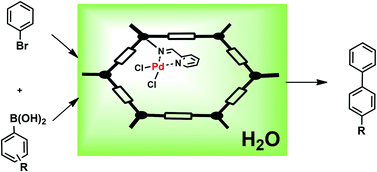Small molecules bearing 1,2,3-triazole functionalities are important intermediates and pharmaceuticals. Common methods to access the triazole moiety generally require the generation and isolation of organic azide intermediates.
Continuous flow synthesis provides the opportunity to synthesize and consume the energetic organoazides, without accumulation thereof. In this report, we described a continuous synthesis of the antiseizure medication rufinamide. This route is convergent and features copper tubing reactor-catalyzed cycloaddition reaction.
Each of the three chemical steps enjoys significant benefits and has several advantages by being conducted in flow. The total average residence time of thesynthesis is approximately 11 min, and rufinamide is obtained in 92% overall yield.
† Department of Chemistry, Massachusetts Institute of Technology, 77 Massachusetts Avenue, Cambridge, Massachusetts 02139, United States
‡ Franciscan University of Steubenville, 1235 University Boulevard, Box 1012, Steubenville, Ohio 43952, United States
Org. Process Res. Dev., Article ASAP
DOI: 10.1021/op500166n
Fully Continuous Synthesis of Rufinamide (6). A DMSO solution of 2,6-
Difluorobenzyl bromide [1 M] and biphenyl (internal standard) [0.1 M] was loaded in an
8-mL stainless steel syringe (feed A). A [0.5 M] DMSO solution of sodium azide was
loaded in a second 8-mL stainless steel syringe (feed B).
Neat methyl propiolate (feed C) and ammonium hydroxide (~28% ammonia, feed D) were loaded in 2-mL SGE glass syringes, respectively. All the four syringes were pumped with Harvard Apparatus
syringe pumps. Feed C was pumped at 2.2 µL/min and feed D was pumped at 6.6
µL/min. The two feeds were mixed and passed through a 40 µL PFA reactor; both mixer
and reactor were cooled in a ice-water bath.
At the meanwhile, feed A was pumped at 16.5 µL/min and feed B was pumped at 41.3 µL/min and stream upon mixing was passed through a 57 µL PFA reactor at room temperature. The two outlets were jointed with a T-mixer and passed through a 431 µL copper tubing reactor.
The reactor was heated at 110 ºC and equipped with a 100 psi back-pressure regulator (BPR). The overall residence time for the continuous-flow reaction sequence was 11 minutes. Allowed 44 minutes to stabilize, the reaction was collected for 60 minutes and afforded brown/red solution. Two
drops of the solution was diluted with methanol to 1 mL, which was then analyzed by
LCMS to give 98% yield. To the left reaction mixture was added 2V water while stirring
and the resulting slurry was set for 15 minutes.
Upon filtration, washing with water, the off-white sticky cake was dried in vacuum oven for 24 hours. The dried off-white solid afforded 215 mg rufinamide (92% yield). NMR in DMSO-d6 was in accordance with
literature.1
HRMS (ESI+) for C10H8F2N4ONa [M+Na]: calculated: 261.0558, found:
261.0559.




